Features of polyurethane panels
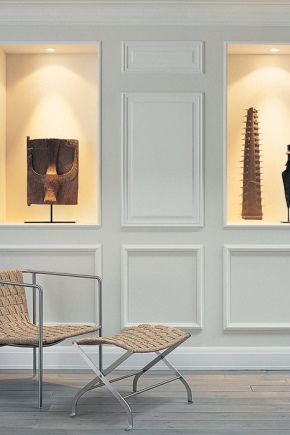
Polyurethane is such a versatile material that its scope of application is simply endless. Decorative wall panels, tiles for walls and ceilings, 3D tiles made of polyurethane not only organically fit into the interior decoration, but also create an additional protective layer.
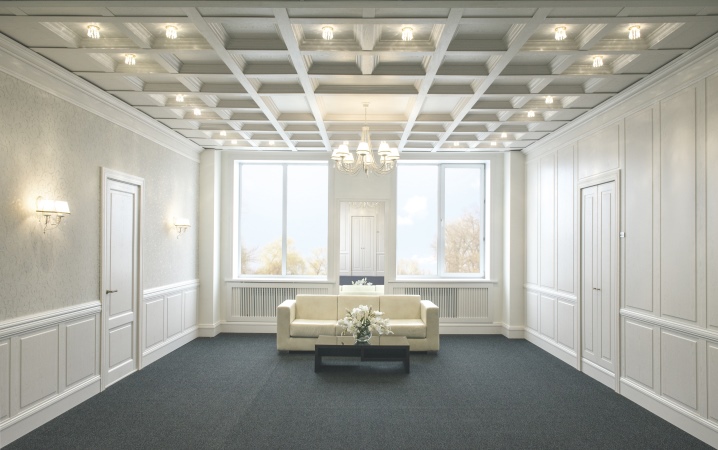
Advantages and disadvantages
Wall panels made of polyurethane for external decoration are made according to the sandwich principle: the outside is made of galvanized metal, and the inside is filled with heat-insulating filler. External and internal panels are produced in several types: for walls, roofing, decorative, etc. The material has a lot of positive qualities:
- polyurethane panels are made from safe refractory compounds;
- PU foam is distinguished by its durability and strength, they perfectly resist temperature extremes, mold and mildew;
- the panels are lightweight, noise-suppressing, resistant to high humidity;
- have good thermal insulation properties;
- are lightweight, easy to carry, easy to care for;
- low price makes them extremely popular and very common finishing material.
A significant disadvantage is that the panels are exposed to UV rays. In addition, despite the fire resistance of the material, polyurethane, when exposed to an open flame for a long time, begins to melt, while releasing toxic chemical compounds.
This requires taking care of fire safety measures.
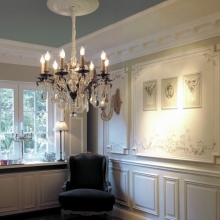
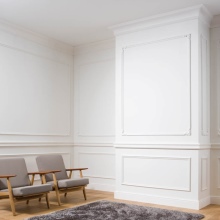
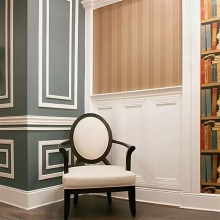
Views
Manufacturers offer several types of decorative polyurethane panels.
- 3D panels. They are used to accentuate a certain interior area on the wall. They are made using three-dimensional imaging technology. The volumetric texture is on a flat base that is mounted on the wall. In the production of models, plastic is added to the polyurethane foam. Their cost is higher than that of ordinary panels, which is explained by a more complex production.
- Colored panels. During their production, the technological process involves the addition of dyes. These are usually pastel shades of neutral colors. This solution makes it easy to match the color scheme to the overall developed concept of interior design.
- Injection plates. These are decorative panels of low density and small thickness. They have a flexible structure, made with a smooth or embossed surface. The material belongs to the type of foamed plastics, it is made in molds.
- High to medium density polyurethane decorative elements. They have reduced plasticity, are used as finishing materials for creating frame frames for paintings, photographs, mirrors.
- Independent elements in the form of molds, plinths, corners. Their use is not limited in the creative field.
- PPU plates. They are offered in the form of sandwich panels, in which the base is polyurethane of various thicknesses, the outside is covered with a layer of galvanized metal. They are used as wall decoration or roofing material.
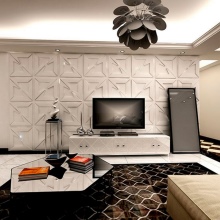
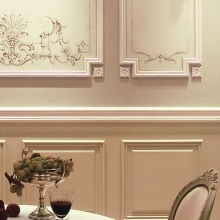
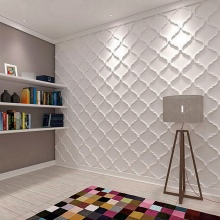
Polyurethane wall panels for exterior decoration have a variety of surface imitations: brickwork; marble or granite surface; slate imitation or natural stone; stone chips or textured plaster; the semblance of a wooden surface. Such a wide range allows you to easily choose a polyurethane product for any need. The shape of these panels is varied enough to suit most design needs. Rectangular or square, smooth or textured, wall and roof, white or colored - an assortment for every taste. Polyurethane corners also have different types of surface structure: they are embossed or completely smooth. The length of the decorative profile is offered in several versions: from 1.2 to 2 meters, width - from 3 cm or more.
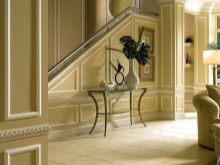
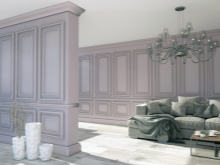
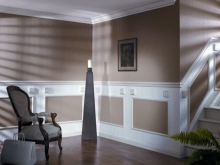
Applications
Polyurethane tiles and panels have more options for interior decoration than exterior. The use in the interior gives designers an endless field for the application of the art of decorative design: facade wall panels, tiles for walls and ceilings, decorative elements as an alternative to plaster stucco molding.
There are many options when the use of tiles instead of natural material is justified not only by lower material costs, but also by its unique properties. Its use in rooms with high humidity is due to the fact that gypsum decorative elements will not survive in such conditions.
Moreover, heavy gypsum requires high ceilings, while almost weightless polyurethane looks organic in small spaces.
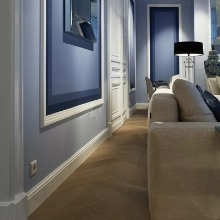

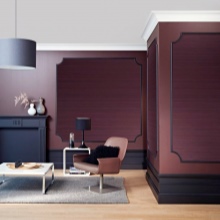
Let's look at some more useful ideas.
- Volumetric wall panels can radically change the interior of a room without much material costs. The original geometry will help accentuate various areas, visually expand the space or raise the ceilings, and create the appearance of zoning. When using such a solution, it must be remembered that for a small space it is most reasonable to choose small geometry of not too large volumes.
- Moldings - these are unique elements with which you can create amazing effects of spatial changes, hide imperfections, hide defects. With the help of moldings with a relief surface, you can create wall compositions or decorative panels.
- Wall panels with imitation of brickwork or natural stone is often used in loft-style interiors. The presence of a wall covered with brick implies a minimum set of furniture and decorative finishes, does not require the use of paints.
- Using ceiling tiles - this is a task that is accessible even for an inexperienced master, since it does not require special skills. The tiles have excellent sound and heat insulation, providing quietness and warmth. Manufacturers provide a wide range of ceiling tiles: smooth and embossed, square and triangular, painted and laminated.
This is unlimited space for a flight of imagination.
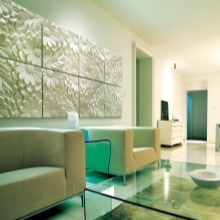
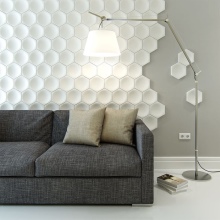

Beautiful examples
3D panels on the walls are a bright accent and a radical change in the interior design.
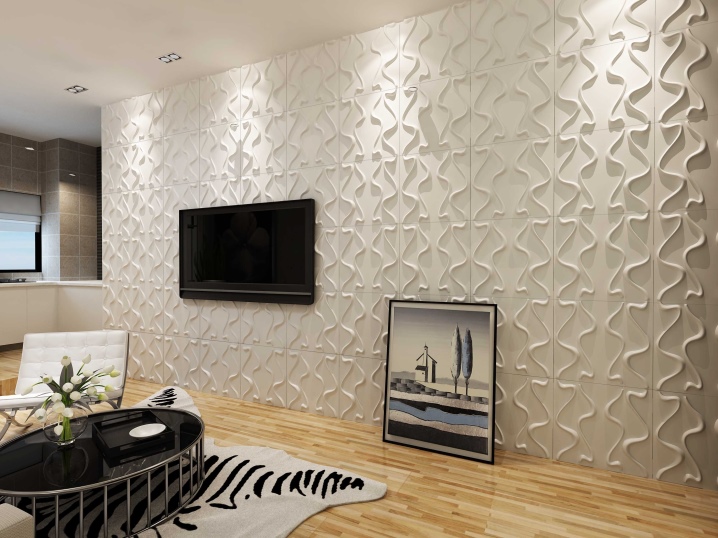
The use of facade panels for interior wall decoration will not only transform them, but also prepare them for the placement of decor.

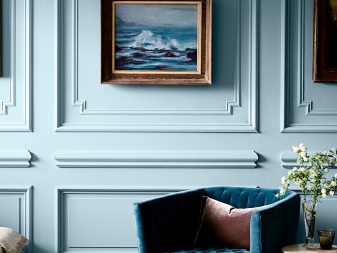
Imitation of brickwork.

Original ceiling tiles.
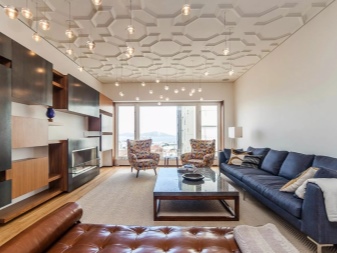
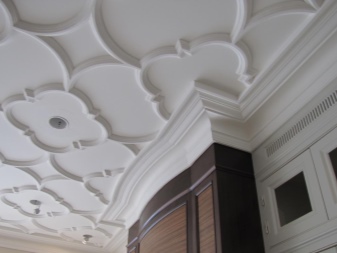
Beautiful imitation of natural stone.
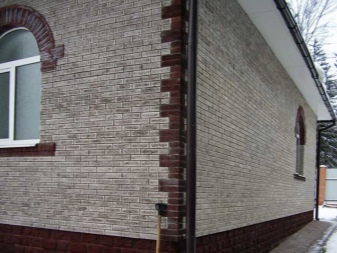
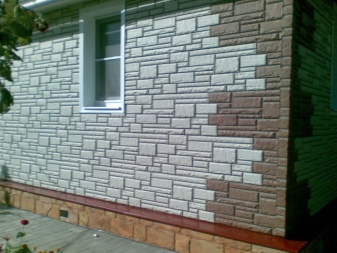
You can learn how to make a polyurethane mold for panels with your own hands from the video below.













The comment was sent successfully.